A million pardons if someone has written about this course before.
I was perusing the archives and came across an interesting looking course, as per the writings of Bernard Darwin in British Golf Illustrated. Amazed to find that the course was located in of all places, Belgium. The first thing one thinks, "Linksland in Belgium?
Oh yes......
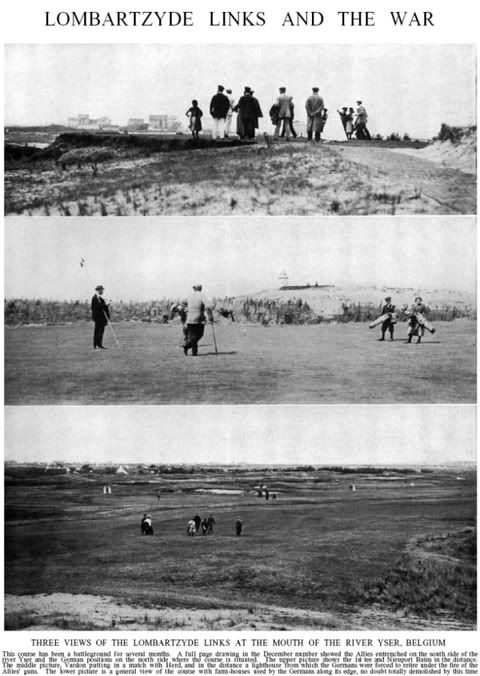
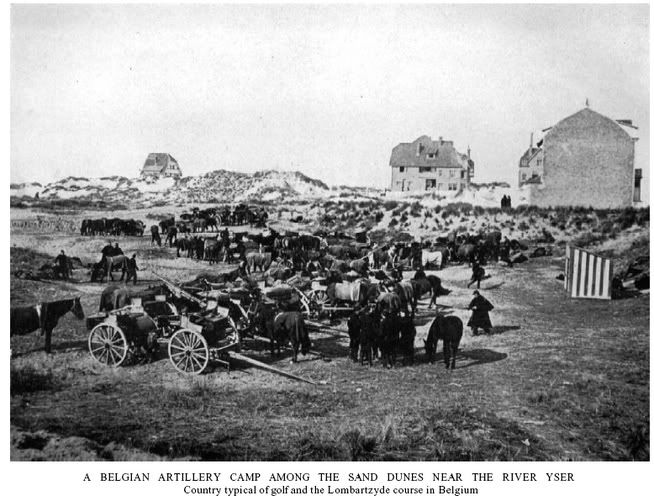
The course in its day was also well known and respected by many of the big names of the day. Darwin would go so far to call it one of the best on the continent.
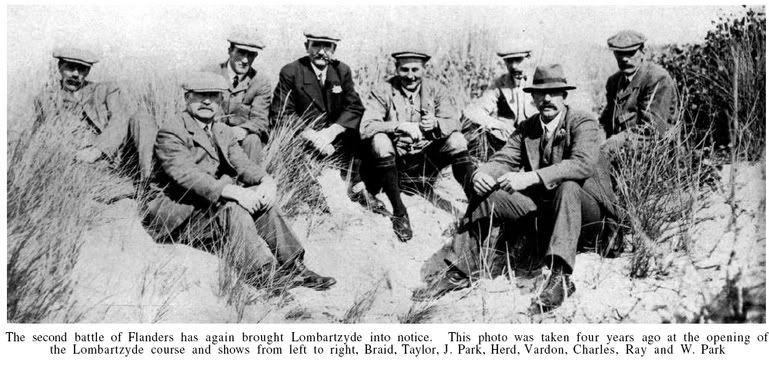
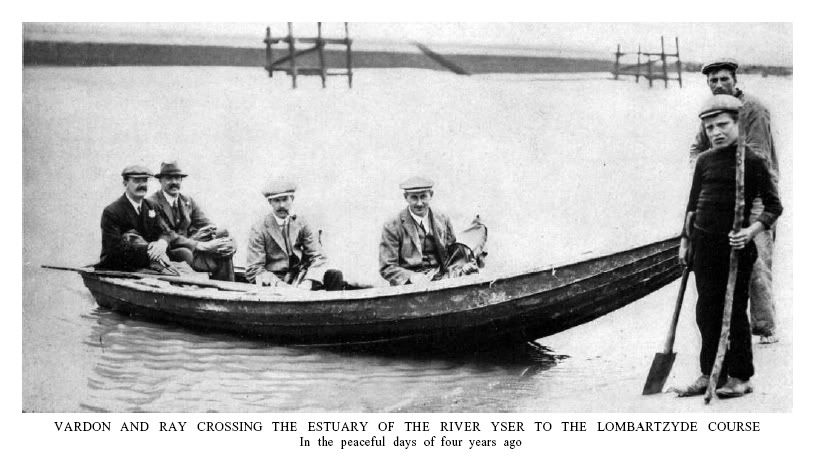
According to the club's history:
At the end of the nineteenth century, King Leopold II decided to make Ostend more attractive for British tourists by establishing a golf-course in accordance with the best prevailling Anglo-Saxon notions. The course was designed by Seymour Dunn and the solemn inauguration took place on 1 July 1903.
Several times in his Foreign Correspondent column, Darwin reported for American Golfer of the blood-battle going on just off of the shores of Flanders against the Kaiser's troops who had taken over and lost several times, that portion of Belgium coastline. They preportedly even set-up headquarters in the clubhouse of the club itself.
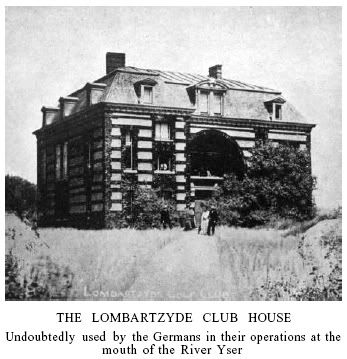 "There are golf courses in so many places in Europe in these days that one might be very sure that some of them would come within the scheme of the military operations that are now taking place. Chantilly, as I have previously recorded, was just touched in the last stage of the fruitless German advance towards Paris. Now there is one course that has caught it very badly indeed, and that is the course of the Lombartzyde Club, near Nieuport Bains, in Belgium. This is where all the most strenuous fighting on the left wing of the Allies has been taking place for a long time, and there is every reason to believe that the course has been simply pulled to pieces by shot and shell and by the engineering works of the soldiers. The Yser, which has been such an important feature in this fighting, runs just alongside the course, and it had to be crossed every day by the golfers, who mostly stayed in the hotels at Nieuport. As ill luck will have it, Lombartzyde was one of the very finest courses on the continent, and one of only two or three of full seaside character. It had big sandhills and hollows and all the rest of it, and had become a very popular golfing resort with English people and Americans. All the hotels were fully booked up for the season when the war broke out...."
"There are golf courses in so many places in Europe in these days that one might be very sure that some of them would come within the scheme of the military operations that are now taking place. Chantilly, as I have previously recorded, was just touched in the last stage of the fruitless German advance towards Paris. Now there is one course that has caught it very badly indeed, and that is the course of the Lombartzyde Club, near Nieuport Bains, in Belgium. This is where all the most strenuous fighting on the left wing of the Allies has been taking place for a long time, and there is every reason to believe that the course has been simply pulled to pieces by shot and shell and by the engineering works of the soldiers. The Yser, which has been such an important feature in this fighting, runs just alongside the course, and it had to be crossed every day by the golfers, who mostly stayed in the hotels at Nieuport. As ill luck will have it, Lombartzyde was one of the very finest courses on the continent, and one of only two or three of full seaside character. It had big sandhills and hollows and all the rest of it, and had become a very popular golfing resort with English people and Americans. All the hotels were fully booked up for the season when the war broke out...."The Battle for Flanders, according to many websites was a costly one for both sides. The artillery and fire power rocked the coastline. The fighting, bloody and horrific, which Darwin futher wrote:
"This talk of a peaceful golf course reminds me that there is one very well known course that has been right in the thick of the bloodiest fighting in Belgium. This is Lombartzyde which is close to Nieuport. You will have read of the terrific fighting on the banks of the river Yser, how the Germans coming on to certain death with almost superhuman gallantry got across that river seven times, only seven times to be driven back by our men. The Yser is said to have run red with blood, though whether this is a literal fact or only a flight of ghastly fancy I do not know. At any rate that river Yser, ordinarily the most placid of streams, runs alongside several holes of the Lombartzyde golf course. For the second time after a long interval it is playing its part in military history and the destinies of Europe, for it was one of the waterways that were of enormous importance to the Duke of Marlborough when he was fighting in the Low Countries some two hundred and ten years ago. Whether there has actually been fighting on the links of Lombartzyde themselves I do not know. The links being close to the sea and our British ships keeping up a destructive fire on the coast it may very well be that the Germans thought it wiser to go a little further inland. In that case it is possible that the course has escaped. It is much to be hoped so for it is or was the best course on the continent—a really fine seaside course, real sea grass and real sandhills—as good in the main as our best British courses, though not quite so long as some of them. The question seems for the moment of purely academic interest. The idea of golf again in Belgium, the idea of anything quite as it used to be, is difficult to imagine just now....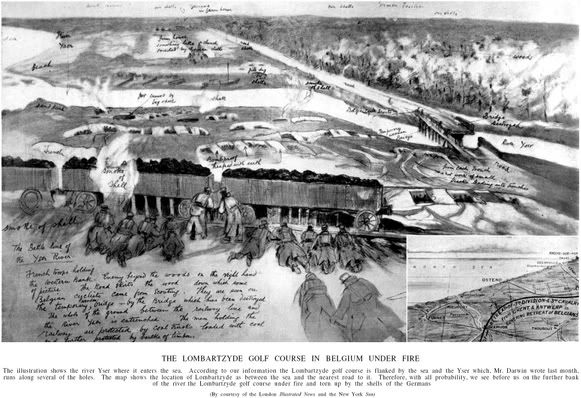
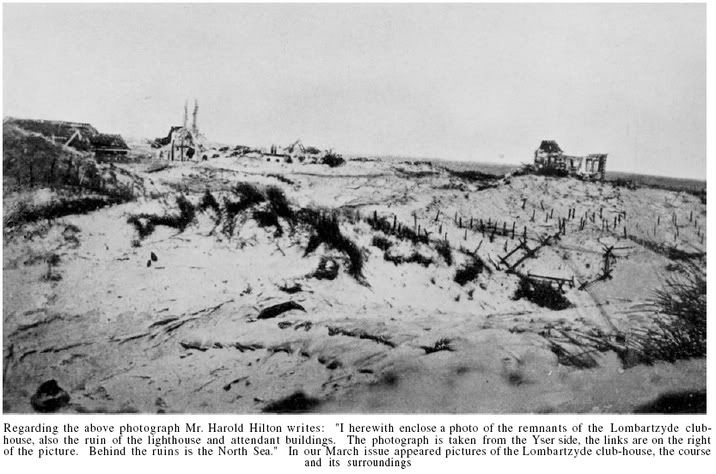


Today, the course is known as the Royal Ostend Golf Club, but seems to have not recovered from its wounds from almost 85 years ago. The dramatic clubhouse was devasted from bombing from both World Wars. Also, a series of roads cuts through the original property, ignoring the blood that was spilled so many years ago. However, the one positive thing is that the peace that Darwin once wrote about does seem to be restored. At least in the pictures of the course today, and for that we should all be grateful.





